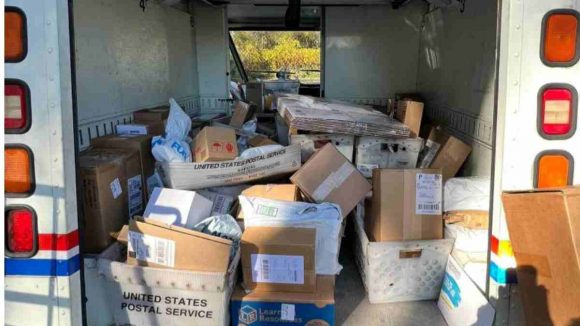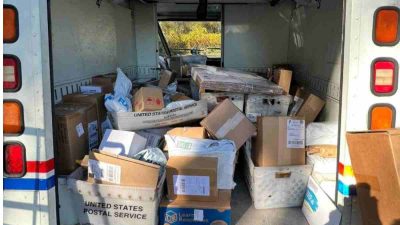The smart transportation market size is estimated to grow at a compound annual growth rate (CAGR) of 15% over the next four years. The market size is forecast to increase by $108 billion.
This is according to the latest study released by market research and analysis company Technavio in its Global Last Mile Delivery Market 2023-2027 report.
The market’s growth momentum will progress at a CAGR of 15.62% during the forecast period. The report states that the growing global e-commerce industry is the main factor driving the global last-mile delivery market growth. There is a significant increase in the growth of the e-commerce industry in China and the US.
The founder of PDD Holdings, of which fast fashion e-commerce platforms Temu and Pinduoduo form part, has increased his wealth by nearly $14 billion in a single year. Colin Huang is now the third richest person in China.
“E-commerce retail sales in the US increased by 39% in quarter one in 2021 over quarter one in 2020, whereas total retail sales showed a growth of only 16.4% in Q1 2021. Hence, such factors positively impact the market, which in turn will drive the market growth during the forecast period,” the report points out.
Why last-mile delivery matters
Estes Express Lines’s technology investor Pat Martin says e-commerce will also increase to $1.6 trillion. Martin says millions of this will only be spent on last-mile delivery. “It will be a balancing act, and I’m just encouraging shippers to look at all the different technologies available.”
Martin says there are significant opportunities for more oversized cargo to be transported during the last-mile delivery process. “If you look at the heavier and bulkier stuff being delivered these days, it’s just growing and growing. There are not enough people to do it today, but these new technology companies will change it.”
Last-mile delivery also has its fair share of complexities and risks. Diversifying options helps carriers not to put all their eggs in one basket. For companies to minimize their risk and simultaneously allow their businesses to grow, they need options,” says supply chain and logistics expert Bart de Muynck.
The role of AI and ML
Logistics analyst Adrian Gonzalez says the applications of AI technologies are undeniable. He refers to generative AI as the ‘new kid on the block’ and advises companies to make use of these tools during the early stages.
Gaining an advantage while everyone is still “trying to understand” this technology will pay off in the long run. And the ingress of AI and machine learning (ML) result in the analyzing of vast troves of data to extract actionable insights. Numerous companies have embraced AI to boost efficacy in their last-mile operations.
Amazon, for example, implemented AI-fueled algorithms to fine-tune deliveries. Likewise, Route4Me harnessed AI and cloud-based strategies to save five times in infrastructure costs, and a 90% savings in running virtual machine instances.
Parker Woodward, head of sales and marketing at Route4Me, says their optimization algorithm leverages AI by calculating the number of stops and distance between the pick-up and drop-off point. If a route needs adjustment due to weather or traffic, the new route is sent directly to the driver’s phone.
Through leveraging AI and ML in route optimization, businesses streamline last-mile delivery by orchestrating a superior customer experience that fosters loyalty and sustainable competitive advantage in the rapidly evolving e-commerce arena.
Tech driving last-mile deliveries
Technavio notices a sharp increasing focus on technological advances as an emerging trend in the market. “The growing adoption of advanced technology for real-time tracking, which enables consumers to manage and modify their retail deliveries with the help of easily accessible online tools is a key trend in the market.”
These tools offer greater transparency to customers besides providing control over package delivery.
But like in all industries, there are operational challenges faced by last-mile delivery companies, hindering market growth. “The main challenge associated with last-mile delivery operations is to provide transparency and improve delivery efficiency while maintaining profitability. Last-mile delivery requires separate deliveries to many locations within a region, thereby increasing logistics costs.”
Labor and fuel costs in the last-mile delivery process also hinder the market.
E-commerce’s role in last-mile delivery
As online sales soar, e-commerce continues to fuel the demand for more efficient solutions, as does the need for promptly delivering goods to customers’ doorsteps. This is why route optimization is the heartbeat of last-mile delivery efficiency.
By employing smart routing algorithms, fleet managers are able to optimize routes while ensuring timely delivery and minimizing costs. This is because advanced routing software analyzes various factors, including traffic conditions, driver availability, and delivery windows.
One example we’ve explored recently is the allure of same-day delivery. It’s become more than just a mere convenience as online shoppers prefer to see it as standard practice. This shift in consumer behavior only underscores the vital role of e-commerce players to streamline last-mile delivery solutions.
The ripple effect of consumers’ evolving preferences is palpable, and a tech-savvy approach – such as AI-powered route optimization – crafts the most efficient customer-centric plan while also making last-mile delivery more sustainable.
Route optimization’s competitive edge
In the crowded e-commerce market, getting last-mile delivery right will provide a competitive advantage. After all, it’s not merely about transporting goods; it’s about delivering a pleasant experience for the customer.
Thus, an optimized last-mile delivery process is synonymous with happy customers and positive reviews, which, in turn, lead to repeat business – the robust foundation for continued success in the e-commerce marketplace.
As e-commerce continues its predicted growth, the emphasis on route optimization in last-mile delivery will intensify. The onus, however, falls on business owners to see tech tools as an investment in customer satisfaction.












